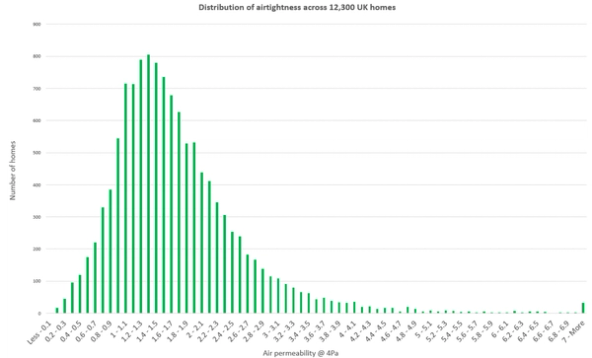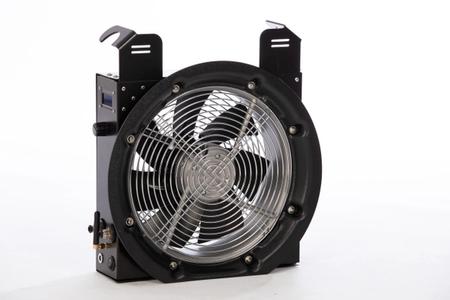Article
Airtightness test results soon to be permitted into EPCs
Reduced data SAP (rdSAP) is the calculation methodology used to produce Energy Performance Certificates (EPCs) for existing homes. This ‘reduced data’ approach is ultimately born from the requirement to assess the energy efficiency of existing homes in a way that is non-invasive, quick and low cost.
This is essentially achieved by what you could term ‘if this, then that’ style inference tables. Essentially, the assessor inputs the age of the property and its primary construction and then software infers the likely thermal characteristics based on the building standards of the time.
Uncontrolled air leakage (infiltration) can account for as much as a third of total heat loss but it is a parameter that is again inferred based solely upon visual inspections made by an energy assessor. The rdSAP fields that influence the assumed level of air leakage in a home include the primary floor construction (concrete slab or timber suspended floor), the age of the windows, the presence of a draught lobby and a count on the number of open vents and flues. This typically leads to existing homes having an assumed air permeability in the order of 2 to 3 m3/m2.h @4Pa (10-15m3/m2.h @50Pa) .
From a sample of 12,000 low pressure Pulse airtightness tests carried out on existing homes, we know that the air permeability of existing homes is in fact more often in the order of 1 to 2 m3/h.m2 @4Pa (mean of 1.7 m3/m2.h @4Pa) (5-10m3/m2.h @50Pa, mean of 8.7m3/m2.h @50Pa).

Thankfully, the new rdSAP 10 methodology published by the BRE Autumn 2023, now permits the input of a measured airtightness test result directly into an EPC (which can in turn be lodged to the central register). This is in recognition that the airtightness of existing homes can be tremendously variable (as illustrated in the chart above) and should a property owner wish to have the true airtightness of their home more accurately reflected in their certificate, they now can.
It should be noted that this is only an optional data input field and assessors can still choose to use the assumed air leakage should they wish. It is expected that new rdSAP 10 based software will go live in April/May 2024.
Our early modelling suggests that for most homes, simply replacing the assumed air permeability with a measured value will yield between 1-3 EPC points.
Here at BTS we anticipate this to present the following opportunities:
- Private and social landlords can be duly credited for efforts already undertaken to minimise air leakage, simply updating their EPCs to reflect the actual measured airtightness.
- Low cost, low hanging fruit interventions that minimise uncontrolled air leakage will finally be able to be recognised in EPC’s. For instance, it will be worthwhile actively reducing air leakage and then having this reflected by the test result.
- More homeowners will be inclined to engage in the topic of airtightness, perhaps recognising it as a worthwhile add-on to an EPC commissioned for the purpose of home improvement advice and guidance.
- Airtightness testing already being undertaken for the purposes of PAS 2035 can now also be used to plug into the EPC.
- The EPC point swing arising from the input of measured airtightness could make all the difference in unlocking a much improved ECO LBS score.
To find out more about our compressed air based Pulse airtightness test device, follow the links below.




